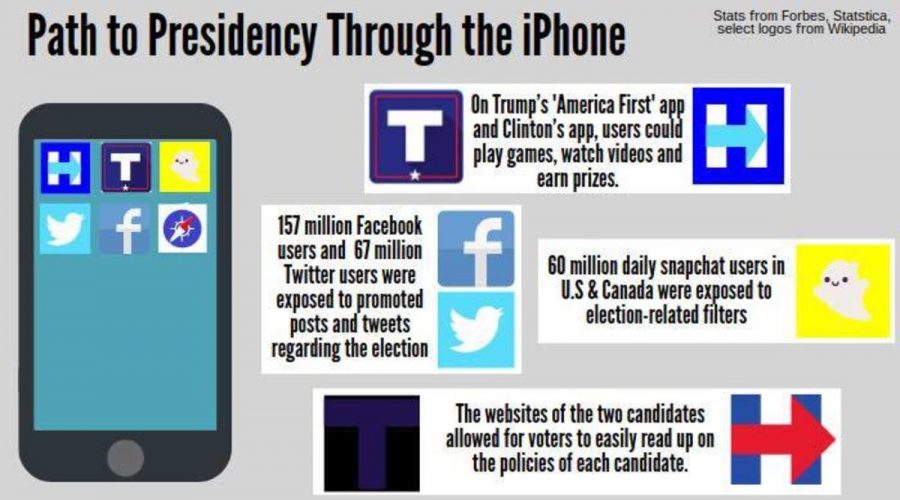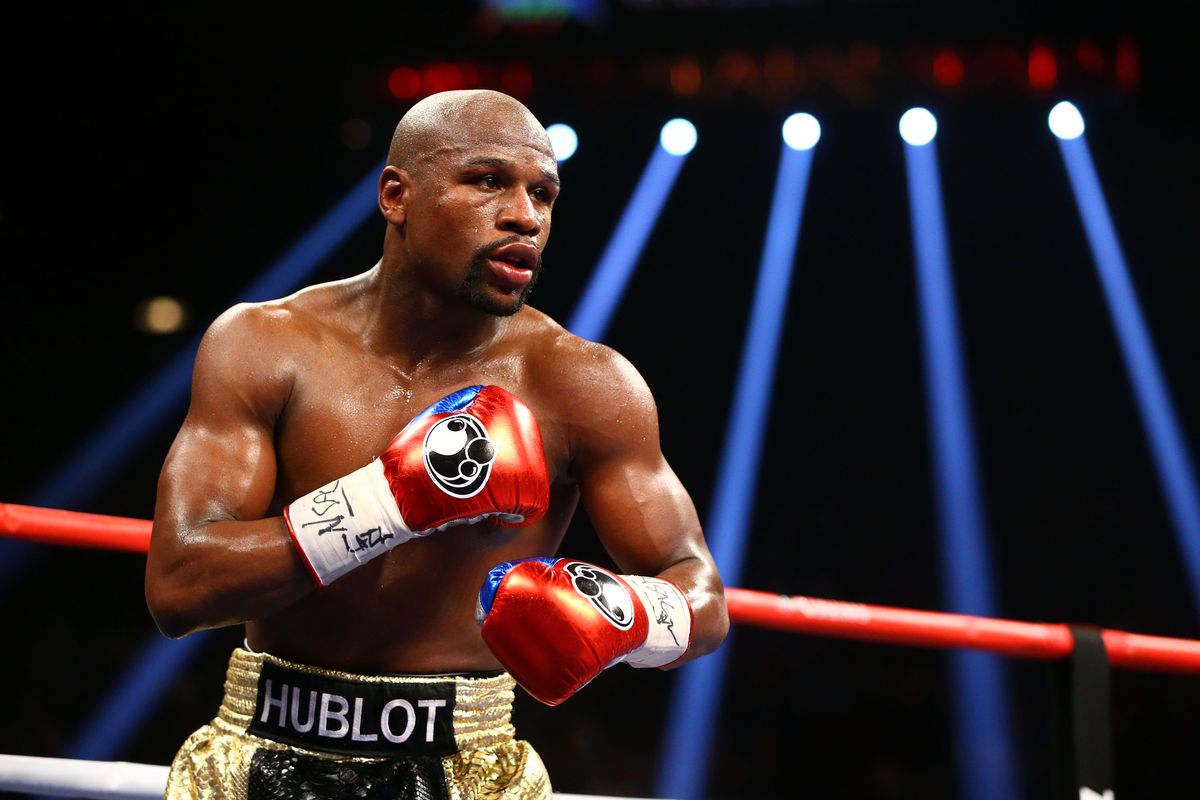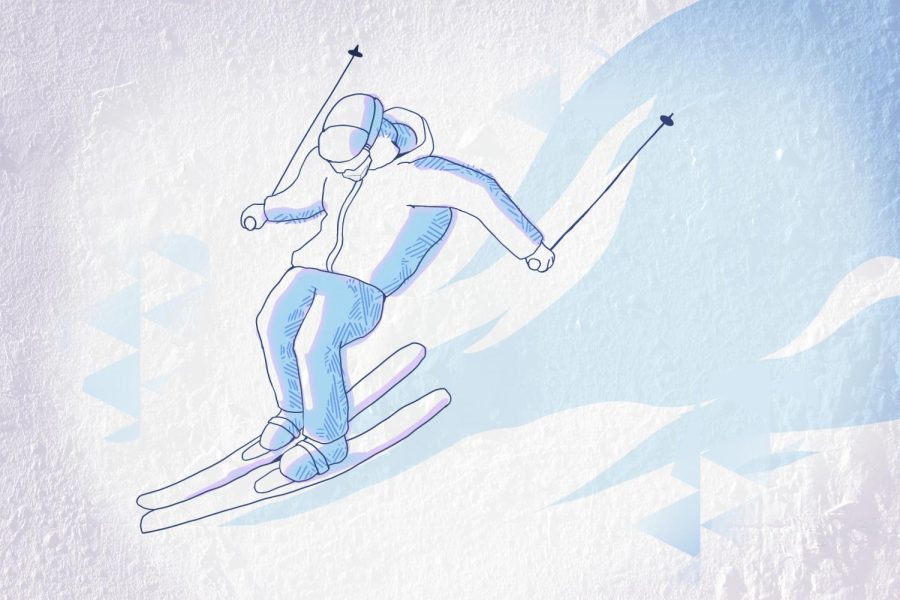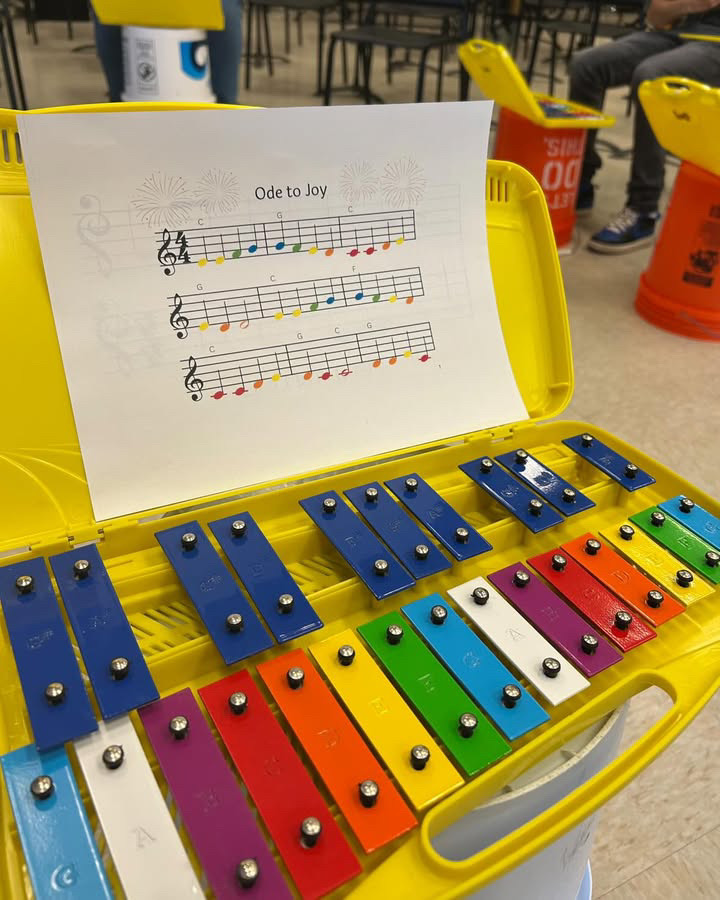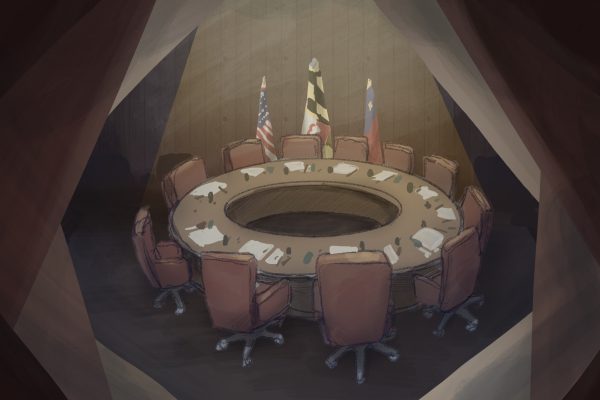Text, talk, surf…vote? Different forms of media have consequence in election
December 18, 2016
Every good AP NSL student knows that the legislative, executive and judicial branches of government affect elections. Lesser known is the impact of this election cycle’s unofficial “watchdogs”: media and technology. Both played a significant role in the 2016 cycle, from encouraging people to vote to educating them on the candidates’ stances.
In an age where technology is ubiquitous, Donald Trump and Hillary Clinton took advantage of these devices in ways previously unseen in a campaign, in hopes of furthering their chances to win the election.
Apps
Donald Trump and Hillary Clinton’s teams both developed more streamlined apps than those of their candidate predecessors to motivate voters to get involved. The apps had features to connect like-minded voters and rewarded supporters who contributed to their campaigns with souvenirs like autographs and posters.
The “Hillary for America” app featured a design studio so users could create a personalized virtual campaign headquarters with furniture and posters, a countdown to the election, daily videos, photos of campaign ads and instant connection to events at which Clinton spoke. The program also gave users the ability to earn points by getting out the vote through social media and compete with their friends to see who is most motivated to help Clinton.
“With the mobile app, supporters can get involved in ways that fit within their busy schedules and personal preferences,” Stephanie Cheng, the creator of the app said. “The mobile app will tell them exactly which small, focused actions will help the campaign in the most meaningful way.”
Donald Trump’s app, “America First,” allowed voters to register to vote, learn about Trump’s stances, and check “Time Left Until We Defeat Crooked Hillary.” Users who invited enough people to join the app, watched a certain number of videos, and/or who donated a particular amount of money won a prize.
Websites
Each campaign’s staff designed its own website that was loaded with information, from the candidates’ stances on issues to their families and personal backgrounds.
Trump’s website was an easy way for junior Luka Kosanovic to understand and look over the candidate’s views.
“The website was definitely easy to navigate,” Kosanovic said. “It allowed me to read what his stances were on various policy issues.”
Clinton’s team had a website with a call tool on their site to connect to undecided voters in key swing states to help them establish a plan to vote.
“The website basically gives you different categories based on demographics and geography and then gives you different people to call,” said senior Fernanda Herrera, who participated in a phone bank that seniors Anna McGuire and Celia Hoffman held before the election. “I think the website was very effective; however, many numbers were outdated, so it was hard to reach people.”
Social Media
Lots of campaigning from supporters and candidates alike occurred on social media: Facebook, Twitter, Instagram and other platforms.
Many students spent a large amount of time refreshing their feeds to stay updated with the latest developments throughout the campaign. Olivia Weals (‘15) is a college student who spoke on social media in support of Hillary Clinton.
“I’m very passionate about politics,” Weals said. “I used Facebook and Twitter and such to interact with people I may otherwise never have communicated with, mostly sharing articles or writing my own posts. I got into several heated Facebook discussions that way.”
Snapchat also encouraged voting through filters and geotags, like little cartoons of Trump and Clinton with a ballot box, or a donkey and elephant high-fiving. Political action committees supporting the campaigns could purchase filter space to advertise a certain candidate.
Social media is a very good thing, but also a very dangerous thing
— Olivia Weals ('15)“I saw one that said something like ‘lock up crooked Hillary,’ paid for by Donald Trump for America on Election Day,” junior Sydney Schenk said. “It was kind of funny to see that on an app like Snapchat. It’s a pretty interesting way to get voters motivated since a lot of younger voters are on social media.”
Technology played a role in every area of the election, no matter which candidate was supported or disputed. Social media specifically can have consequences on an election, Weals said.
“Social media is a very good thing, but also a very dangerous thing,” she said. “We run the risk of secluding ourselves in ‘echo chambers’ of people who only agree with us.”
Anna McGuire and Celia Hoffman are members of the Black and White.



